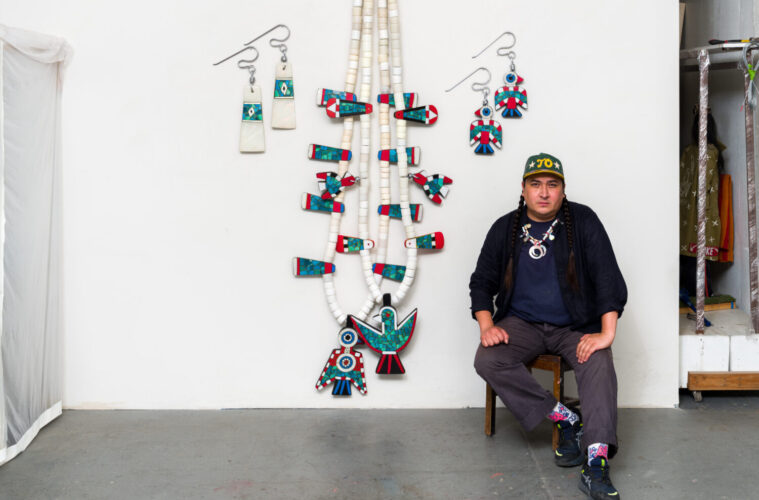 Ishi Glinsky is responsible for one of the most indelible works in the Hammer Museum’s Made in L.A. 2023: Acts of Living biennial—the assertively indigenized pop culture monument depicting the Scream mask. The towering image is translated into a thoroughly decorated, collaborative, and hand-made mixed media sculpture made of canvas, resin, wood, foam, ink, metal, fiberglass, rawhide, rawhide, bear grass, yucca, wool, shells, cotton, clay, beads, wood and a dozen other object/materials—all of which juxtaposes and complexifies the movie reference with the warmth and care of ceremony and community. That process of “Indigenizing Pop” expresses across Glinksy’s work across sculpture as well as painting, drawing, installation, and clothing design as he pursues his multi-perspectival vision of fusing his experiences of extractive art history with the ancestrally-informed traditions of his own nation, the Tohono O’odham people, and Indigenous nations of the Southwest more broadly.
Ishi Glinsky is responsible for one of the most indelible works in the Hammer Museum’s Made in L.A. 2023: Acts of Living biennial—the assertively indigenized pop culture monument depicting the Scream mask. The towering image is translated into a thoroughly decorated, collaborative, and hand-made mixed media sculpture made of canvas, resin, wood, foam, ink, metal, fiberglass, rawhide, rawhide, bear grass, yucca, wool, shells, cotton, clay, beads, wood and a dozen other object/materials—all of which juxtaposes and complexifies the movie reference with the warmth and care of ceremony and community. That process of “Indigenizing Pop” expresses across Glinksy’s work across sculpture as well as painting, drawing, installation, and clothing design as he pursues his multi-perspectival vision of fusing his experiences of extractive art history with the ancestrally-informed traditions of his own nation, the Tohono O’odham people, and Indigenous nations of the Southwest more broadly.
As throughout cultural and anthropological history we have seen a consistent dynamic of appropriation and erasure with regard to non-Western arts and Euro-centric audiences, Glinsky takes seriously the power and purpose of reversing that practice—posting a version in which it is the Indigenous artist’s prerogative to center their own history and pick and choose from the rest as muse and foil. In Glinksy’s works, this results in chromatically charged patterns derived from traditional textiles taking up the modernist abstraction mantle, a flip of the mascot/logo rebel hierarchy in fashion, or an everyday-magic gesture of interconnection and thoughtful display that also breaks Instagram.
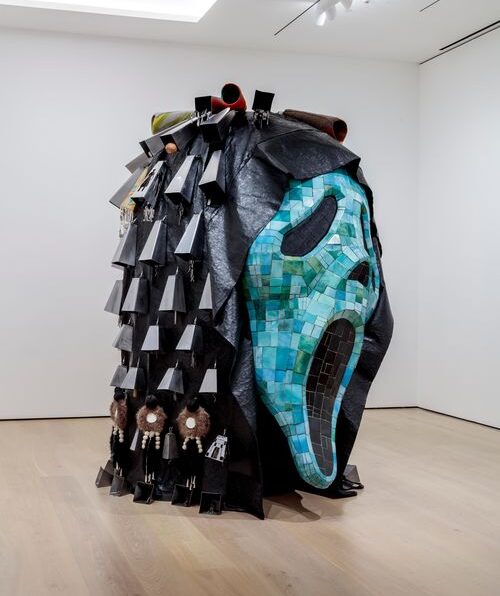
Ishi Glinsky, Inertia-Warn the Animals, 2023. Installation view, Hammer Museum (Photo: Charles White)
L.A. WEEKLY: When did you first know you were an artist?
ISHI GLINKSY: My answer is probably similar to other people who are artists. Pretty early on, with my folks being artistic, I essentially grew up creating.
What is your short answer to people who ask what your work is about?
Working in sculpture and painting, each piece is centered on investigating traditional Indigenous practices from my tribe, the Tohono O’odham Nation and other Intertribal influences both tangible and intangible. These works are often created with an emphasis on disproportionate shifts in scale to both amplify Indigenous practices and stories, while memorializing them in the form of monuments to survival.
What would you be doing if you weren’t an artist?
Something poorly because I’d rather be in a room creating.
Did you go to art school? Why/Why not?
In college I was focused on graphic design and illustration. I quickly learned that this was not the path for me and pursued art but not through art school.
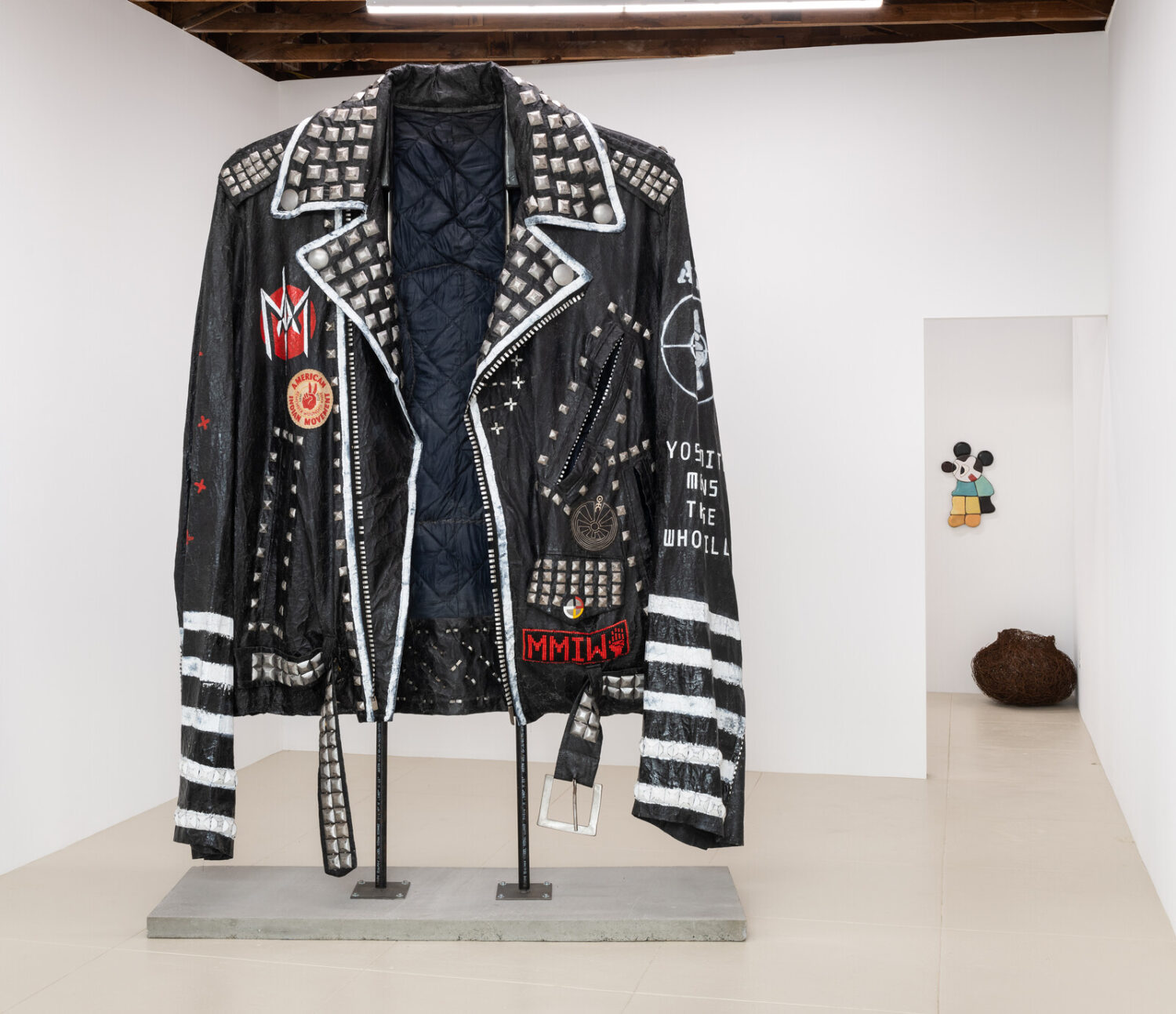
Ishi Glinsky (Photo: Ruben Diaz. Courtesy of Chris Sharp Gallery)
Why do you live and work in L.A., and not elsewhere?
Los Angeles has been my home since 2006, and the development of the body of work since then I couldn’t imagine doing anywhere else. Access to materials and other creative folks, collaborators, other fabricators and an artist community, has really helped drive the work.
When is/was your current/most recent/next show or project?
I have had the honor to be a part of Hammer Museum’s recently opened Made in LA: Acts of Living. This work entitled “Inertia—Warn the Animals” (2023) was produced for their biennial and is, for me, both ambitious in scale and approach. I’ve zoomed in on Powwow outfits and in particular, the objects that contribute to this arrangement of sound, to capture the brief interval of stationary calm just before a Grand Entry begins. For this, I’ve taken “Ghostface,” an iconic Hollywood mask, enlarged, and indigenized it, to further its function not just as a disarming figure with slasher franchise origins, but also transforming it into a monumental work which conflates pop culture with indigenous traditional artistry.
Throughout the piece are scaled up details of Powwow outfits and memories. Each element is an exploration of object, craft, and intertribal celebration. There is a collaborative element on the hood, featuring pieces from 11 other indigenous artists from different Nations and backgrounds. Ultimately, this work is intended to capture the feeling of celebration, initially overwhelming the viewer with a rush of emotion, and then captivating and absorbing them through the piece’s detailed intricacies.
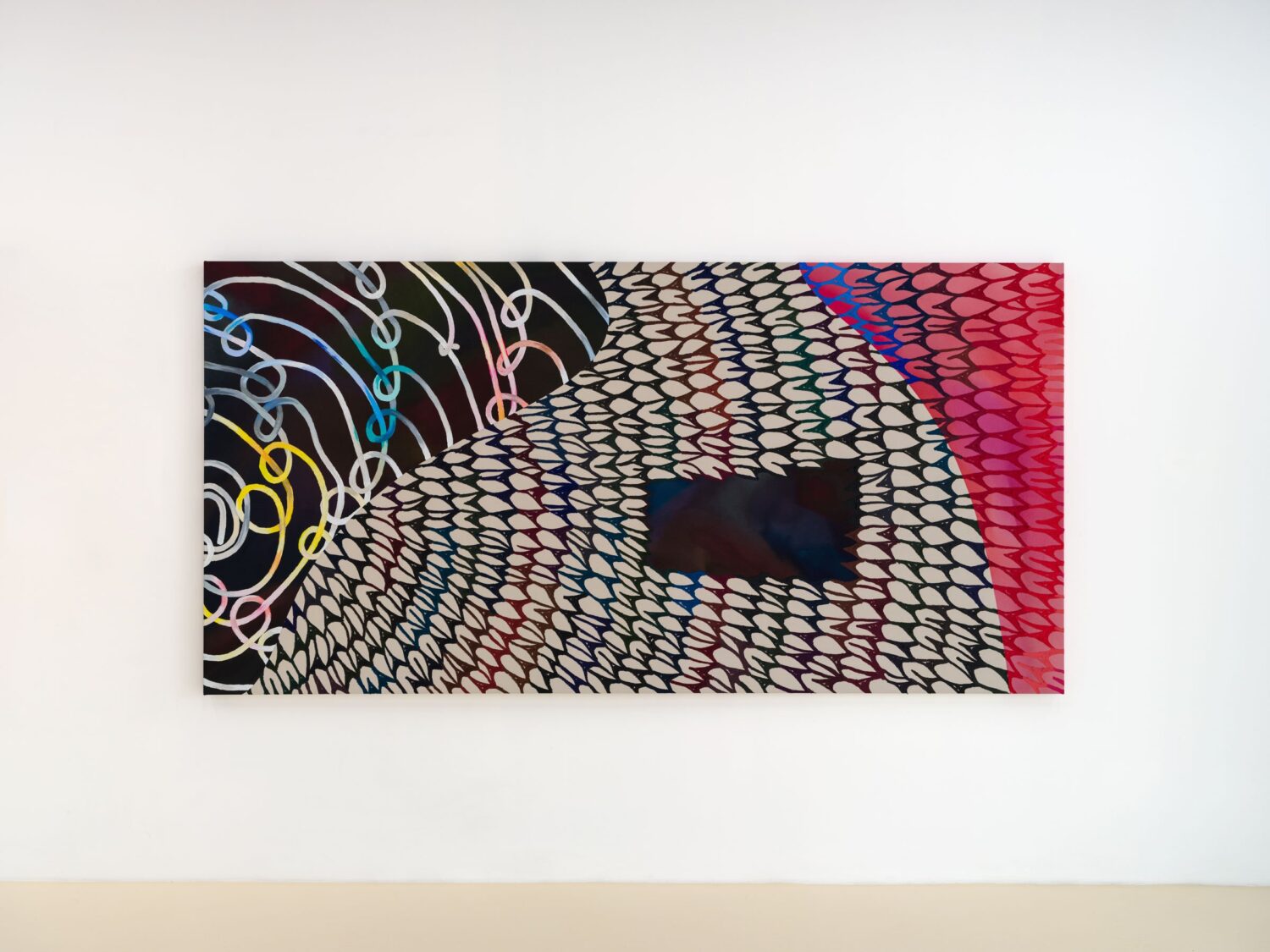
Ishi Glinsky: Lifetimes That Broke The Earth, installation view (Photo: Ruben Diaz. Courtesy of Chris Sharp Gallery)
Do you listen to music while you work? If so, what?
Yes, I listen to a rotation of various Indigenous podcasts, NTS Radio, Powwow Music, “Northern Cree,” and Dodger Games during the season.
Website and Socials, please!
IG: @1451
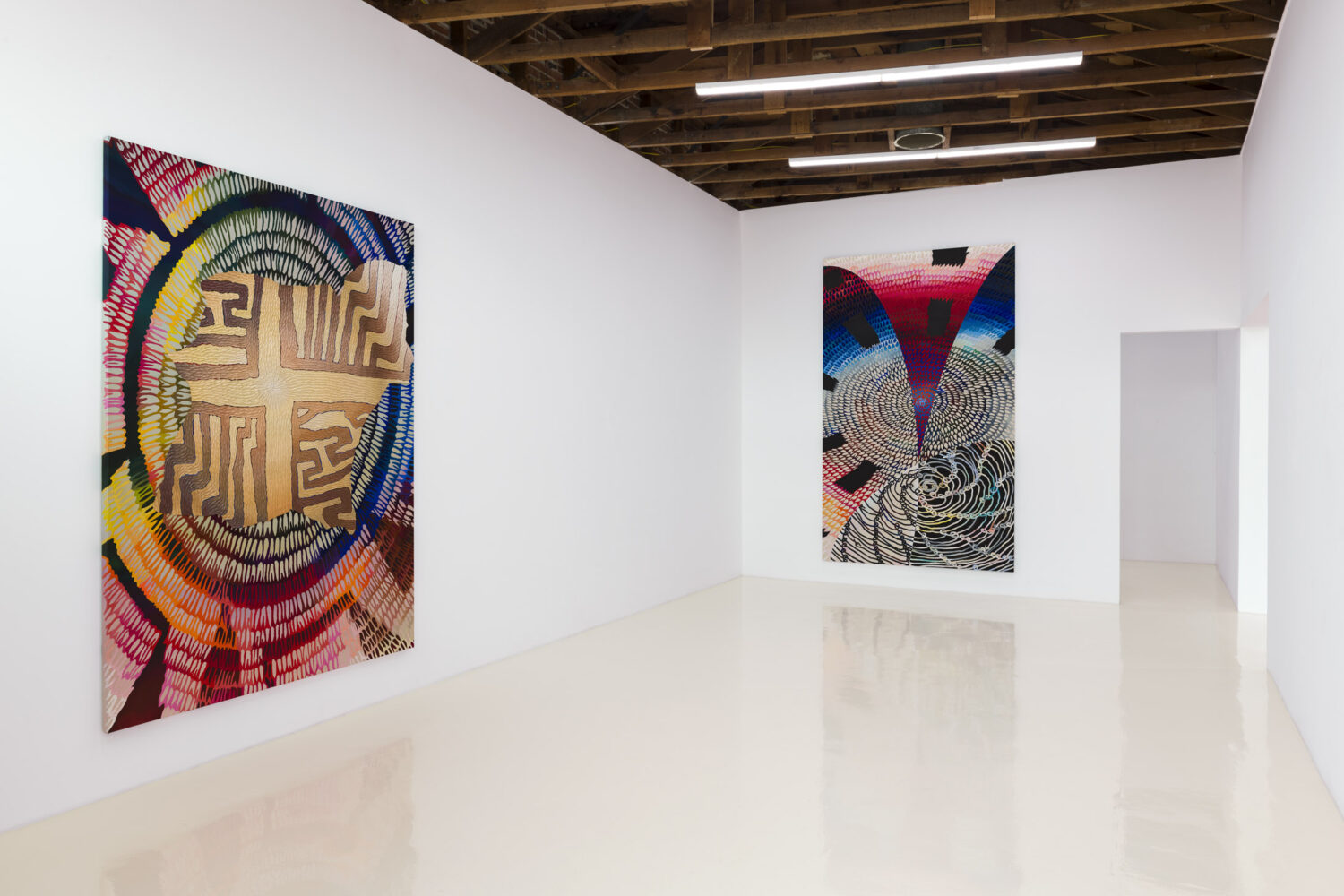
Ishi Glinsky: Lifetimes That Broke The Earth, installation view (Photo: Ruben Diaz. Courtesy of Chris Sharp Gallery)
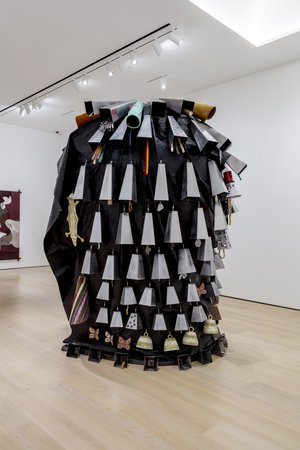
Ishi Glinsky, Inertia-Warn the Animals, 2023. Installation view, Hammer Museum (Photo: Charles White)
/Editor’s note: The disclaimer below refers to advertising posts and does not apply to this or any other editorial stories.
Advertising disclosure: We may receive compensation for some of the links in our stories. Thank you for supporting LA Weekly and our advertisers.

